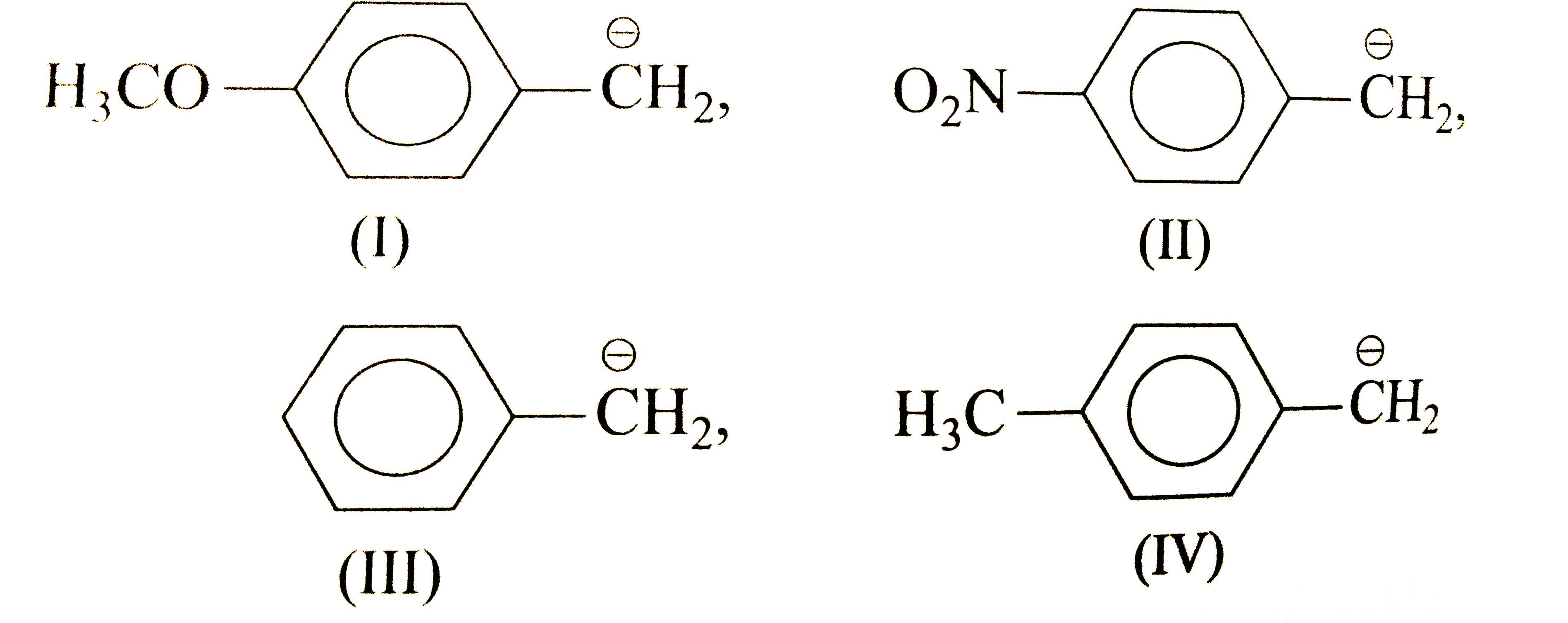Arange the following in correct order of stability.
(i) (ii)
The correct Answer is: (ii)
To arrange the given elements in the correct order of stability, we need to consider the inert pair effect, which influences the stability of oxidation states in certain groups of the periodic table.
1. Identify the Elements and Their Oxidation States:
- For the first part: Ga^+, In^+, Tl^+
- For the second part: As^(+5), Sb^(+5), B^(+5)
2. Understand the Inert Pair Effect:
- The inert pair effect refers to the tendency of the s-electrons (the outermost s-orbital electrons) to remain non-bonding in heavier elements of groups 13 and 15. This effect increases down the group, leading to a greater stability of lower oxidation states.
3. Analyze Group 13 Elements (Ga, In, Tl):
- Gallium (Ga) has a +1 oxidation state that is more stable than its +3 state due to the inert pair effect.
- Indium (In) also shows a similar trend, but its +1 state is more stable than its +3 state as we move down the group.
- Thallium (Tl) shows a strong inert pair effect, making its +1 state more stable than +3.
- Therefore, the order of stability for Ga^+, In^+, Tl^+ is:
- Tl^+ > In^+ > Ga^+
4. Analyze Group 15 Elements (As^(+5), Sb^(+5), B^(+5)):
- In group 15, the stability of the +5 oxidation state decreases down the group due to the inert pair effect.
- Boron (B) in the +5 state is more stable than Antimony (Sb) in the +5 state, which is more stable than Arsenic (As) in the +5 state.
- Therefore, the order of stability for As^(+5), Sb^(+5), B^(+5) is:
- B^(+5) > Sb^(+5) > As^(+5)
5. Combine the Results:
- The final order of stability for both groups is:
- Tl^+ > In^+ > Ga^+ (for group 13)
- B^(+5) > Sb^(+5) > As^(+5) (for group 15)
Final Answer:
1. For Ga^+, In^+, Tl^+: Tl^+ > In^+ > Ga^+
2. For As^(+5), Sb^(+5), B^(+5): B^(+5) > Sb^(+5) > As^(+5)
- For the first part: Ga^+, In^+, Tl^+
- For the second part: As^(+5), Sb^(+5), B^(+5)
- The inert pair effect refers to the tendency of the s-electrons (the outermost s-orbital electrons) to remain non-bonding in heavier elements of groups 13 and 15. This effect increases down the group, leading to a greater stability of lower oxidation states.
- Gallium (Ga) has a +1 oxidation state that is more stable than its +3 state due to the inert pair effect.
- Indium (In) also shows a similar trend, but its +1 state is more stable than its +3 state as we move down the group.
- Thallium (Tl) shows a strong inert pair effect, making its +1 state more stable than +3.
- Therefore, the order of stability for Ga^+, In^+, Tl^+ is:
- Tl^+ > In^+ > Ga^+
- In group 15, the stability of the +5 oxidation state decreases down the group due to the inert pair effect.
- Boron (B) in the +5 state is more stable than Antimony (Sb) in the +5 state, which is more stable than Arsenic (As) in the +5 state.
- Therefore, the order of stability for As^(+5), Sb^(+5), B^(+5) is:
- B^(+5) > Sb^(+5) > As^(+5)
- The final order of stability for both groups is:
- Tl^+ > In^+ > Ga^+ (for group 13)
- B^(+5) > Sb^(+5) > As^(+5) (for group 15)
1. For Ga^+, In^+, Tl^+: Tl^+ > In^+ > Ga^+
2. For As^(+5), Sb^(+5), B^(+5): B^(+5) > Sb^(+5) > As^(+5)
Topper's Solved these Questions
- BOOK - RESONANCE ENGLISHCHAPTER - PERIODIC TABLE & PERIODICITYEXERCISE - Exercise-21videos
PERIODIC TABLE & PERIODICITY
- BOOK - RESONANCE ENGLISHCHAPTER - PERIODIC TABLE & PERIODICITYEXERCISE - Exercise-31videos
PERIODIC TABLE & PERIODICITY
- BOOK - RESONANCE ENGLISHCHAPTER - PERIODIC TABLE & PERIODICITYEXERCISE - Exercise-11videos
PERIODIC TABLE & PERIODICITY
- BOOK - RESONANCE ENGLISHCHAPTER - P-BLOCK ELEMENTS (HALOGEN & NOBLE GASES)EXERCISE - APSP PART-322videos
P-BLOCK ELEMENTS (HALOGEN & NOBLE GASES)
- BOOK - RESONANCE ENGLISHCHAPTER - QUALITATIVE ANALYSISEXERCISE - INORGANIC CHMISTRY(Qualitative analysis)35videos
QUALITATIVE ANALYSIS
Similar Questions
Knowledge Check
- Question 1 - Select One
Which of the following is correct order of stability of alkene?
A B
B C
C D
D
- Question 2 - Select One
Consider the following carbanions :

Correct decreasing order of stability is :AII>III>IV>IBIII>IV>I>IICIV>I>II>IIIDI>II>III>IV - Question 3 - Select One or More
Which of the following orders are correct regarding stability?
A B
B C
C D
D
Correct order of stability of following alkenes is
 View Solution
View SolutionWhich of the following is the correct order of stability of free radicals ?
View SolutionWhich of the following order is correct for thermal stability?
View SolutionConsider the following carbanions:

Correct decreasing order of stability is :View SolutionExpress the following in the form a+ib:(5i)(−35i)
View Solution

